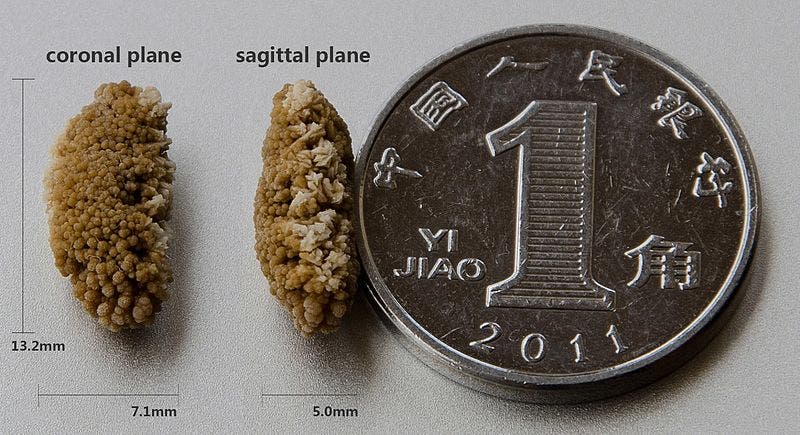Researchers at the University of Washington School of Medicine have devised a novel therapy for kidney stones that employs focused ultrasound bursts to break them up. The new method fragments stones of varying sizes within 10 minutes, with minimum risk of injury and without the need of anesthesia unlike currently established treatments.

Kidney stones are a very common and very painful condition, affecting one in 10 Americans with an estimated healthcare burden of $10 billion a year. Kidney stones are composed of minerals like calcium that are present in the urine. They form when high levels of these substances crystallize into a mass.
Many of these stones are small enough to pass through the urinary tract on their own, while also scratching tissue and causing pain along the way. But others are so large they require treatment, usually with high-energy shock waves that cause the stones to fragment. This isn’t an easy thing to go through though. The patient needs to lie on a padded table on top of a water-filled cushion, then a machine sends powerful energy waves through the water and into the body. You can even hear a popping sound as thousands of shock waves break the stones into many tiny pieces. However, it’s quite painful and stressful, which is why patients have to undergo anesthesia or sedation.
By contrast, the new method called burst wave lithotripsy (BWL) uses short harmonic bursts of ultrasound energy that can break up stones in shorter sessions without the need for anesthesia or sedation.
The team that developed the new procedure, which was led by Dr. Jonathan Harper, performed pre-clinical studies in human patients with kidney stones. These patients were about to undergo ureteroscopy, a highly invasive surgery meant to treat some of the hardest cases of kidney stones. But before they underwent their surgery, the patients underwent a 10-minute BWL therapy. When the doctors performed the ureteroscopy, they could directly observe if the ultrasound therapy performed well — and it did.
The BWL therapy targeted 25 large stones in 19 patients. Overall, 90% of the stone volume was completely broken up within the brief treatment period. Most of the resulting fragments were under two millimeters in size, which is just small enough for them to pass on their own without much pain. Post-ureteroscopy examination showed mild to no tissue injury owed to the ultrasound bursts.
The inventors of BWL believe their proof of concept could be a game-changer in the field. Many patients show up at the emergency department complaining about excruciating pain in their groins and have to be put on opioids to manage the pain until they can access a kidney stone treatment. Many patients require multiple invasive shock wave procedures. But the new ultrasound-based therapy can get the same job done without anesthesia and within a single, noninvasive 30-minute sitting.
“The ability to noninvasively break stones and expel the fragments in awake patients at first presentation in the ED or clinic has the potential to provide just-in-time treatment leading to a reduction of the overall pain, cost and resource burden associated with a stone event,” researchers wrote in their study published in The Journal of Urology.



